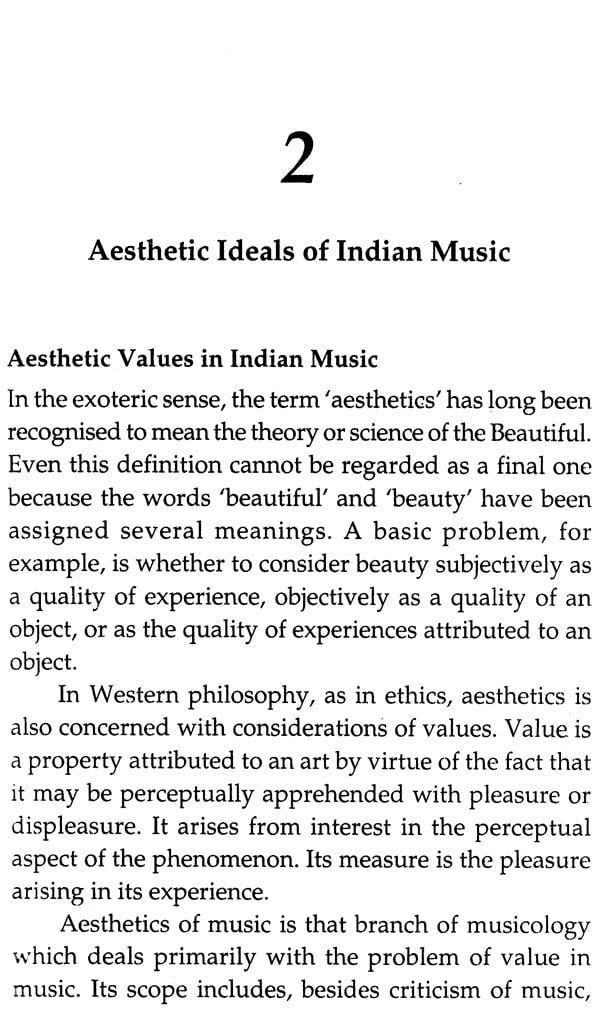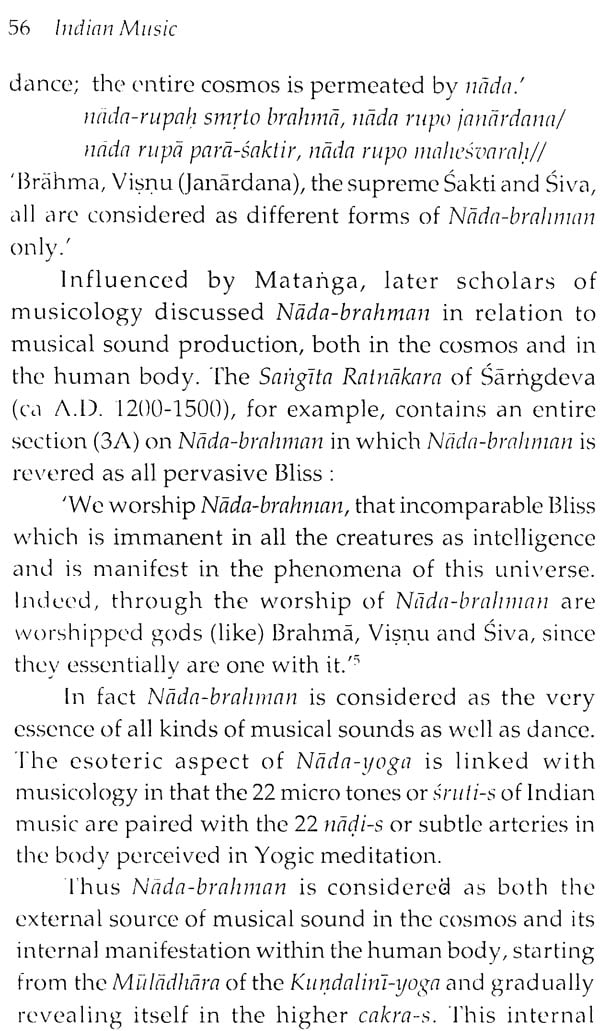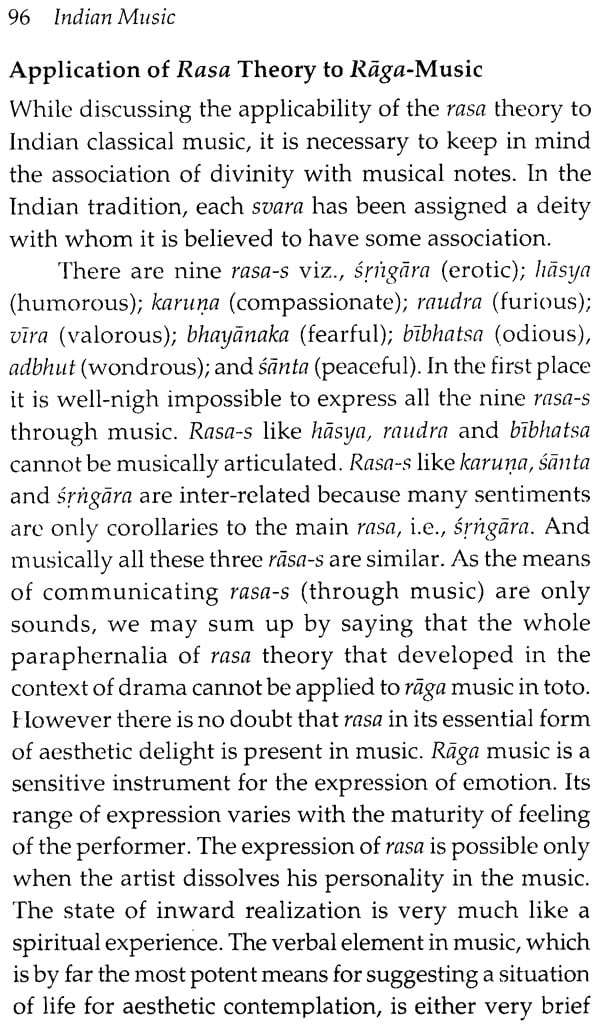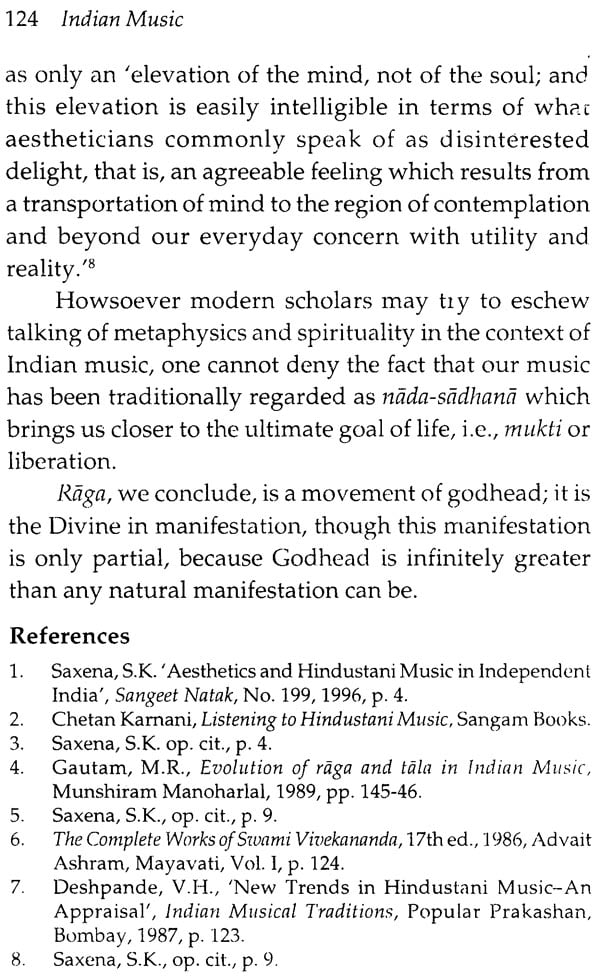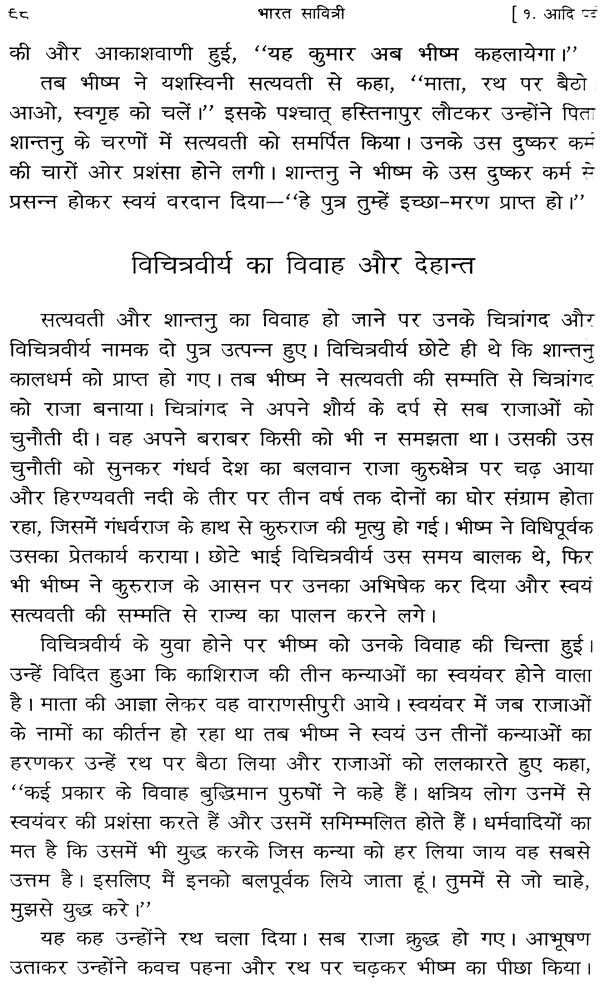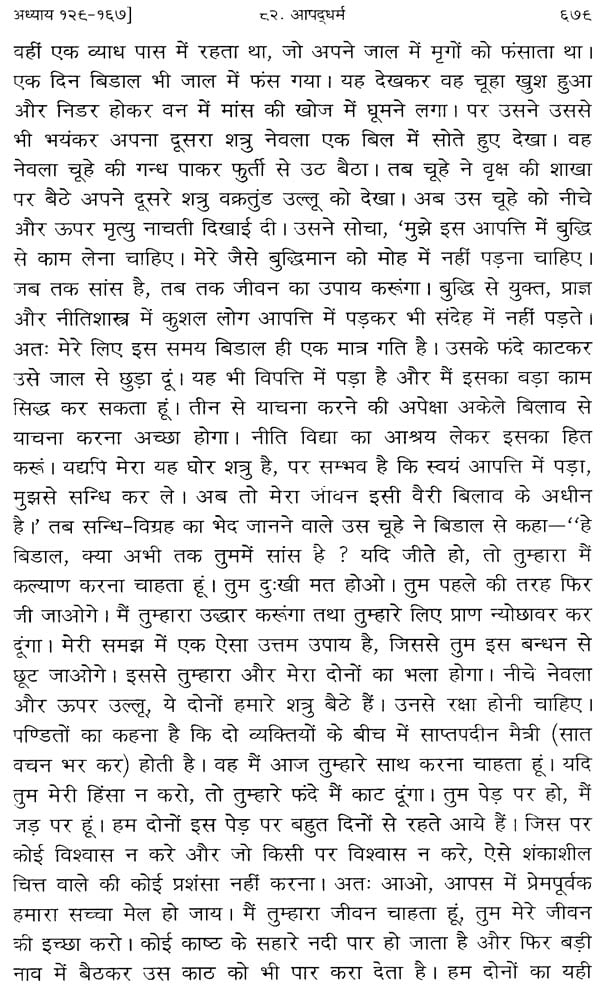
Indian Music (Gateway to Salvation)
Book Specification
| Item Code: | NAI479 |
| Author: | Richa Varma |
| Publisher: | Sasta Sahitya Mandal Prakashan |
| Language: | English |
| Edition: | 2010 |
| ISBN: | 9788173094118 |
| Pages: | 124 |
| Cover: | Hardcover |
| Other Details | 8.5 inch X 5.5 inch |
| Weight | 150 gm |
Book Description
Dr. (Mrs.) Richa Varma (born 1970) studied music at the faculty of Music and Fine Arts, University of Delhi. She obtained the M.A. (Music), M.Phil, and Ph.D. degree from the University of Delhi and taught music at Vivekananda College and Bharati College, Delhi. Her research work, 'Nada-yoga: A Return Journey from Many to One' was published in the Special issue. 'Asian Music with special reference to China and India', Music Symposia of the 34th ICANAS-1993, University of Hong Kong.
She was honoured with Bina Sharma Memorial Award (1990) by the University of Delhi. She is now a practicing musician.
In this part of the world known as India, music has always been considered as one of the means of salvation for the human soul. The ultimate reality of the vast, unexplored world within us and of the external physical world was discovered to be one and the same by sages of the Upanisadic age. They declared on the authority of their personal experience that it is the One which appears as Many. That One was designated by them as Brahman, the monosyllable am being its sound symbol.
The discoveries of modem science, specially in quantum physics, suggest that matter at the subatomic level consists of energy patterns, a continuous dance of energy. Europe's foremost jazz expert and jazz producer Joachim-Ernst Berendt thinks that the world is sound, a rhythmic dance of energy. Interestingly, in his famous book, "Nada-Brahma : The World is Sound", he strongly suggests that discoveries in Modern Sciences confirm this profound truth.
Dr. Richa Varma has very successfully brought about a quantum integration of the Science and Philosophy of Indian classical music. While maintaining a scholarly standard, the book offers an interesting reading to the common man also.
In the present book, she not only highlights the contribution of the famous Indian physicist Prof. C.V. Raman, a Nobel Laureate, to Indian classical music, but also presents- in a very lucid manner-the intricacies of the Indian raga music. 'Indian Music', by Dr. Varma, is really music to the ear.
If music is the language of the heart, and therefore universal, what is Indian about music?
The answer is: It is only in India that music is revered as one of the paths leading to God (muktidayakam, na tu ranjakam). No doubt, good music entertains also, but it is only as a secondary condition. Entertainment is more of a bye-product and not the summum bonum of Indian music, which is liberation.
The method of treading this path is called 'Nada- sadhana (practising music), and the goal Nada-brahman (The Ultimate Reality as the primordial sound of Om). For a devotee or bhakta it is Nada-upasana, for a man of knowledge or jnani it is Sabda-brahman, and for a yogi it is a quantum jump from the pasyanti to the para state of sound.
We shall try to gain an insight into the science and philosophy of Indian music, especially the raga music. In the process, we shall first try to explore the contribution of the noted Indian physicist, Prof. C.V. Raman, to the understanding of Indian musical instruments, especially 'the acoustics of stringed and percussion instruments, e.g., Vina (also veena), tabla (also tabla) etc. We shall then investigate the salient features of Indian music.
The vibrations of the pleasing sounds of both the instrumental and the vocal music, in their total material form, came to be known as raga in the Indian musical system. The note, the movement of notes in the pitch, the formation of scale, and scales of different intervals, the combination of upward and downward scale, all form the melodic matrix, which we call raga. In fact, a raga is more than mere sensation or a bundle of impressions. There is an intrusive feeling that the raga hides more than it reveals; that there is possibly more to the Indian classical raga system than meets the eye. One of our motives therefore, is to gain a deeper insight into some philosophical aspects of the raga music.
In the case of music, the most natural way to conceive of its philosophy would be to say that it seeks to unravel the meaning of the basic concepts of music. The questions of reality, truth and knowledge about music as an artwork and as creative activity have also to be tackled. Further, our aesthetic experience and appreciation of music, its metaphysical and spiritual aspects, and the place of music in life and reality have to be discussed. However, if all these aspects are to be explored throughly, a study of the philosophy of music would become a very big subject and anyone working in this field would find oneself compelled to restrict one's concern in keeping with the limits of one's ability and aptitude.
Raga-s are many. But the many-ness of the raga-s is only an external manifestation of the One, that is, Nada brahman. Apparently the One and the Many are flagrantly opposites, but in reality they are complementary. The complementarity of opposites is the very foundation of not only the Indian philosophical thought and wisdom but also of Modern Science. The fundamental feature of the Principle of Complementarity emerging from quantum physics, and of the 'uncompromising reconciliation of uncompromising extremes' which the Upanisad-s follow throughout, is the joining together in a creative synthesis of contradictory concepts. In the present study therefore, we shall also try to explore how the manifoldness of the raga-s and the oneness of Nada-brahman reconcile in a most uncompromising manner in the primordial sound of Om.
I take this opportunity to express my deep sense of gratitude to Prof. (Mrs.) Bhupender Seetal, Faculty of Music and Fine Arts, University of Delhi, under whose affectionate supervision I obtained both the M. Phil. and the Ph. D. degrees.
I feel highly indebted to Prof. S.K. Saxena and Dr. Prem Lata Sharma from whose writings I derived a lot of material and inspiration, especially the former with whom r also had the privilege of personal discussions.
I am grateful to all my teachers at the Faculty of Music and Fine Arts, University of Delhi, at whose feet I learned the little that I know about Indian classical music.
I thank Prof. LN. Choudhury, Academic Director, IGNCA, New Delhi, for allowing me access to the library of the Centre.
I feel extremely grateful to Prof. P.S. Verma for providing detailed and very valuable comments on the manuscript.
I express my gratitude to my parents-in-law, my husband and our two kids, all of whom have been instrumental in some way or the other in making the publication of this book possible.
Finally, I thank Sasta Sahitya Mandal without whose kind co-operation, the book would not have seen the light of day.
| Publisher's Note | 5 | |
| Foreword | 7 | |
| Preface to the Second Edition | 9 | |
| Preface | 11 | |
| 1 | Introduction | 17 |
| 2 | Aesthetic Ideals of Indian Music | 33 |
| 3 | Nada-Brahaman Centralis Arcanum of Indian Classical Music | 45 |
| 4 | The Raga System of Indian Music | 60 |
| 5 | Raga: A Representation of Thought , Vision and Emotion | 83 |
| 6 | Raga : A Complementarity of One and Many | 98 |
| 7 | Trends in Contemporary Indian Classical Music | 115 |
